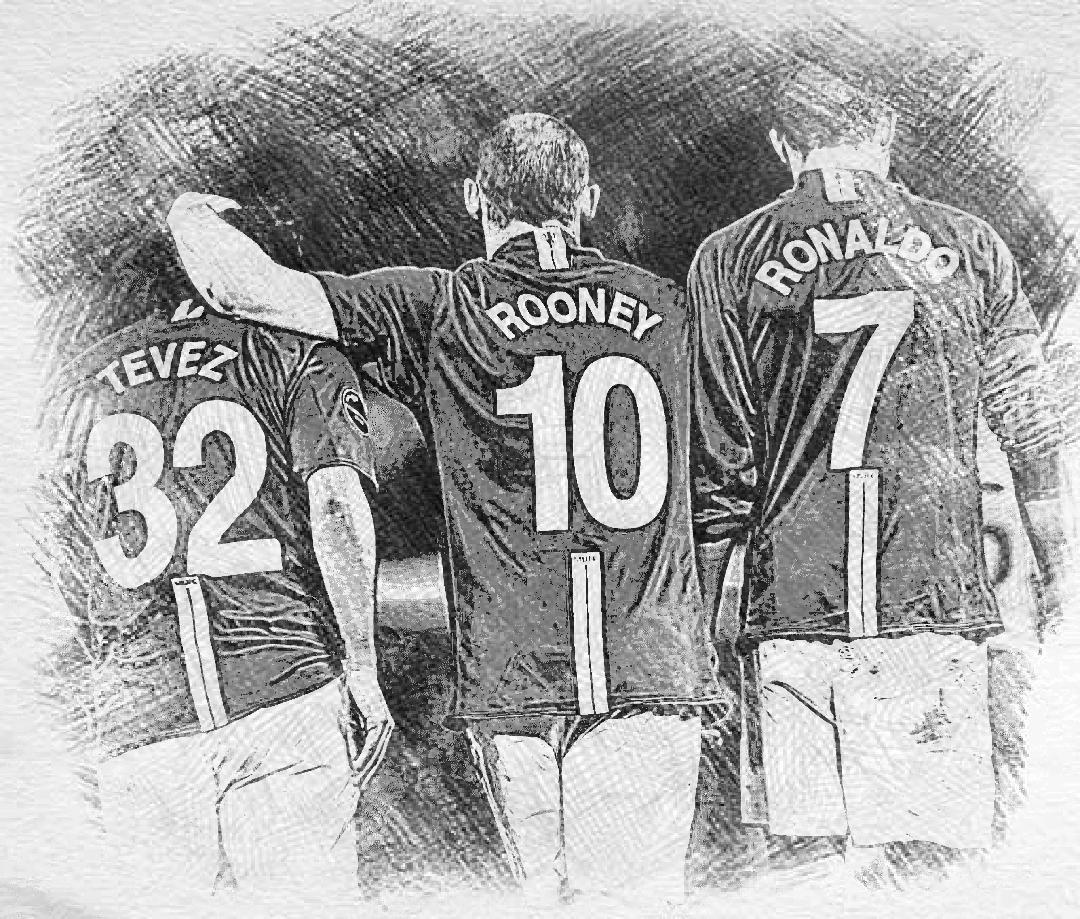
Total Football Journeyman: Sir Alex’s Strikerless Masterclass
In a series about Total Football, you might wonder why I am writing about Sir Ferguson’s Manchester United? While Ferguson’s Man United achieved amazing success between 2006-2009, they were not known for playing Possession-style, associated with Total Football. Or for that matter one cannot really pin point a specific style of play or formation to that legendary team. However, one constant that contributed to Ferguson’s success was his masterful management of his players. Sir Alex Ferguson was a people manager like no other, who perfected the concept of player rotation. He instinctively knew how to match personalities, traits and individual playing styles to max effect. So what can we learn from him in FM20? And especially in the context of replicating Total Football.
Myths and Misconceptions
Unlike other historic sides, Manchester United did not use one specific formation between 2006-2009. Instead Sir Alex used a variety of formations, from 4-3-3 to 4-4-2, and too many others to recount. The myth that Sir Ferguson favoured a traditional 4-4-2 is really that, a myth. His overall strategy was much more complex and fluctuated markedly depending on whether it was a home or away match, domestic or European. Yet they played beautiful fluid football with a lot of attacking intent and flair, not seen in Europe since Ajax and Dutch National sides of 1970s. So in that sense, Fergie’s Manchester United of early 2000s was a Total Football team through and through.
One must keep in mind that Total Football, is not only about tactics and styles. On a bigger scale, it is a philosophy and a way of viewing football as more than just a game. In this sense, we cannot look at players as simply numbers or interchangeable cogs in a machine. Much of both Sir Ferguson’s and Johan Cruyff’s success can be attributed to how they treated their personnel. Both managers viewed their players as unique individuals with specific playing styles. And they were able to bring these individuals together for greater effect by matching them like jigsaw puzzle pieces.
There is a common misconception that neither Cruyff nor Ferguson were great tacticians. That their success was really only due to teams stacked with world-class talent. It is true that Cruyff had his Total Football Dream Team. And Ferguson was fortunate to manage some of the best players of the generation. The likes of Ronaldo, Rooney, Giggs, Tevez and Carrick only come around once in a lifetime after-all. But this view does not take the importance of player management into account. And both Cruyff and Ferguson were magicians at this. They knew you can’t just buy up world-class talent and expect to win everything. Otherwise, wouldn’t Paris Saint-Germain Globetrotters win 10 Champions Leagues by now?
Breaking Records
But enough clowning around, football is for most clubs a serious and highly competitive business. And Ferguson’s United in its time was one of the most competitive and successful clubs ever. In the short time-span of 3 years, Fergie’s United won a grand total of 10 domestic and continental trophies! That included 3 Domestic Titles, 3 Cups and 2 Shields. On the World Stage they had 1 UEFA Champions League and 1 FIFA Cup World Cup, no less.
Three is a Magic Number
When forwards attack from wide to inside, they are far more dangerous.
Sir Alex Ferguson, speaking to The Guardian
The 2007-2008, the year of the European Double, is probably the best season to showcase Ferguson’s tactical versatility. For most of that season Manchester United alternated between the variants of 4-3-3 (more like 4-5-1) and 4-4-2. I say variants because at times his tactics were more akin to an amalgam of the two. The 4-4-2 sometimes resembled the 4-3-3 in attacking phase and the 4-3-3 (which Ferguson mostly used in Europe) had some elements of the classic 4-4-2. This was especially apparent when Park Ji-Sung, the hard-working wide midfielder would act more as a defensive presence in the midfield than a true winger. So he would join the other three midfielders while Rooney and Ronaldo were the two forwards upfront. In the 4-3-3, Park’s job, especially during the tougher European games, was to shut down the opponent’s key attacker.
While the 4-4-2 was essentially a 4-3-3 with the deadly trident of Ronaldo, Rooney and Tevez roaming in the front. In essence, the hard work of both Rooney and Tevez compensated for Ronaldo’s adventurous antics. You had two False9s (Rooney and Tevez) occupying the opposition while Ronaldo used his immense physicality to cut in from the right. So while Rooney and Tevez worked their socks off, Ronaldo posed the real goal threat from the wing. In midfield you also had three midfielders. Without getting into the specific roles, Ferguson also went with the magic three there. Usually two withdrawn midfielders, in Carrick and Scholes, and one more attacking one such as Anderson (or Giggs).

This was true even with the 4-4-2. There Ryan Giggs, despite being a left winger on paper, acted as the third, more attacking (and playmaking) midfielder. Giggs was already 33 and no longer the nimble player of his youth and thus not as useful on the wing. So to take advantage of his exquisite technique, vision and off the ball movement, Ferguson had him come inside from the left and thus join the central midfield trio during attack. This also allowed Evra, the speedy left-back, to go forward and provide width on the wing.
When in Rome Do As The Romans Do
Another remarkable thing about that Manchester United side is that they played without a player in the traditional striker spot. For two years between 2007 and 2009, Manchester United essentially played as a Strikerless side. The deadly trio of Ronaldo, Rooney and Tevez were basically two withdrawn, highly-technical, hard-working supporting forwards and one energetic beast of a winger. No classic poacher line-leading forward among them. If anything it was similar to the system that Klopp has going with Firminho, Salah and Mane. Except Ferguson preferred to play with two Firminhos, and… Ronaldo. By far any recreation of Ferguson’s strikerless trident, is that elusive Ronaldo role. To date there is no single player that is like Ronaldo. Although modern players like Salah and Sterling have similarly embraced the goal-scoring winger role. The biggest piece of the puzzle was the unpredictability and dynamic movement of Ferguson’s Man United.
Another remarkable thing about the Man United’s Trio, was how dynamic it was. Their positions on the field changed often during the course of the match. The roaming was ever-present. The fluid three roamed and interchanged so much that it’s sometimes difficult to pin-point exactly where they played. If there is such a thing as a “free role” in football, we had three of them at Man United. But if we are to make a simple generalization, Ronaldo was most often to the right of Rooney and Tevez. Or at least that is where he most often started during the defensive phase. While Rooney and Tevez tended to share the central and left-sided spots. Rooney favoured the left flank because he had the pace to cut inside. But he could just as easily drop into midfield as a shadow striker while Tevez and Ronaldo ran past him. Again, versatility.
The movement between the three, left opponents scratching their heads, not sure who to mark or where the threat would come from. But it was not the first time that centre-backs faced such a dilemma.
It was the example of Spalletti’s 2007 Roma side that had the most influence on Manchester United at this time. In 2007 Luciano Spalletti started setting up his team in a Strikerless manner. And it was not so much by choice as by a lucky accident. Spalletti’s strikers were injured so he had no choice but to play his talismanic, ageless Trequartista Francesco Totti in the more withdrawn AMC position. There Totti played his usual creative role of moving into the gaps between opposition defence and midfield. This created a new problem for opposition defenders, who suddenly found themselves without anyone to mark. And because Roma effectively played with four players in the midfield along with the two wingers, they could easily dominate possession and create deadly counter-attacks. It was a recipe for surprising success. If only it worked more consistently.
At times Roma’s 4-6-0 worked spectacularly (6-2 victory over Inter), while at others not so much. Being crushed by Manchester United 1-7 was one such time. Although they bested them in the Champion’s league, Ferguson’s Manchester United learned what they could from Spalletti’s Romans. The cat was out of the bag and football would never be the same as the effectiveness of strikerless systems was revealed.
Fast forward to 2008, and the trio of Rooney, Tevez and Ronaldo has become one of the most efficient goal-scoring threats in the Premier League, without any one of them playing a traditional striker role. Between 2007 and 2008, they played 42 games together, where Ronaldo scored 34 goals, Rooney – 17, and Tevez – 15. They also combined for 25 assists. Again these are only the goals and assists for the games where they were all on the field together. At the same time, at Roma, Spalletti converted Mirko Vucinic from a regular striker into an inside forward. Vucinic would position to the left of Shadow Striker Totti in order to ensure a goal threat from the wing. Vucinic respectfully amassed 34 goals in Spalletti’s system. On the other hand Totti’s 26 goals in 2006/07 alone won him the European Golden Shoe. Not bad for a 31 year old!

FM Applications
The combined example of both Spalletti’s and Ferguson’s set-ups, inspired me to make my own experiment in Strikerless Tactics. That last piece introduced the roles of the libero and the shadow striker. It showed how they could be used to unlock stubborn defences. Hopefully the rest of this article will show just how one can set up a strikerless tactic to trick your opponent into giving up space. Because such a tactic can both overwhelm in possession and strike fast on the counter.
This is the latest iteration of my Total Football tactic. As you can see I decided to switch the role of the Libero to that of a DLP. For practical reasons.
To be honest, I was a little disappointed with the Libero. I think there is a problem with it in FM20, even-though it’s probably the best representation of the role in Football Manager yet. The problem is that it acts too much like another centreback and not enough as a playmaker. In reality a Libero is the team’s best playmaker acting in a deep #6 pivot role. Players such as Franz Beckenbauer or Pep Guardiola were not just simple defenders. No, the all-important #6 role should be the best player in the formation. It is the rule first set by Cruyff, and religiously followed by his disciple Guardiola. It is a player who starts attacks and through whom opposition has to get through first. And while liberos in the game can put up some respectable numbers, they cannot act as a real #6.
The above is my Libero’s stats from the whole season playing in this role. He put up some decent passing numbers and has great attributes for this role. But it was far from what I expected from him. So for my tactic to further improve in 2nd season, some changes needed to be made.
Tactical Changes
Another reason behind the tactical change, was to finally attempt a Pep Guardiola Manchester City-inspired tactic. So far I dabbled with 1970s Ajax, 1980s Barcelona, and 1995 Ajax. It was time to honour what is probably the best modern adaptation of the Total Football style to date. Guardiola’s Positional Play. The way Manchester City play right now. It certainly feels like Guardiola’s current Juego de Posición is his best Total Football attempt yet. It is a concept that took Guardiola over a decade to perfect, in a long process he probably started when first learning his craft under Johan Cruyff. So now it feels good to arrive at the culmination of both my series and modern Total Football. First with Tiki-Taka and now Positional Play, Pep has become a modern force behind both honouring and reinventing Total Football.
Obviously, some aspects of Guardiola’s philosophy’s are impossible to model accurately in FM20. Yet I feel that a strikerless 4-1-4-1 shape is a pretty good model of how Man City lines up in defensive phase at least. Ferguson’s Three “Free Players” got me thinking that their roaming movement and interchanging roles could be right at home in a Total Football tactic. And to closely represent the front three in Guardiola’s Man City, Aguero (who could be right at home as a shadow striker with his tireless hard work off the ball and timely forward runs) and Man City wingers need to be given lots of freedom. So that is where the Wide Midfielder on Attack role comes in. In my opinion it is a perfect “free” wide attacker role.
Firstly, with an attack duty, WM can have a very attacking mentality. This allows it to get high up the field and to act essentially like an attacker in AML/AMR position when in attacking phase. Secondly, and most importantly, this role does not start with a lot of Player Instructions. The only one really is the “Get Further Forward”. This means that the role can be tweaked extensively to act exactly how you wish it to. Previously I already used it as a base to create an Deep Raumdeuter role in FM19. Or you could use this lack of PIs to get a more varied, dynamic behavior from your wide player without being limited by the role. Even if I want my player to hug the line, I might not want him to dribble and cross incessantly as a winger role would demand.
For instance, lets take a look at a player like Rafa at Benfica.
Rafa has “cut inside from left” trait and is pretty comfortable with both feet. This means that telling him to swap positions with your Right WM, can make Rafa act very differently once he is on the right wing. There, because his PPM only applies to the left flank, he will tend to run along the right side and act like a traditional winger. At the same time the player that swapped with Rafa, has a “cut inside from right” trait which won’t be active when he is on the left wing.
Thus with this simple swap move, you can program alternating complex behaviour in your wingers. At one point in the match they will act like wingers and then switch to being inside forwards when swapped. It is really rather simple, but nevertheless effective in confusing the AI. It is a somewhat primitive attempt at recreating Guardiola’s hybrid winger/inside forward roles, but I can’t think of better way to model what Sterling does for Man City. Now if only I could figure how to do this for the fullback roles? But that’s a topic for another time.

Finally, as I mentioned in my last article, I am a big fan of the Shadow Striker role. I believe that it is probably the best representation of Messi’s False9 role in 2008 Barcelona. As a role that starts deep and then goes forward in attack and relies strongly on its creativity and intelligence, it is the best role to get a player to both score and assist goals. Exactly what Messi does best. And Pizzi didn’t do bad also!

But I am getting too far ahead of myself. I will be delving deeper into my strikerless 4-1-4-1 tactic and its two “Free Eights” roles in my next update where I will be giving you a tour of one of world’s best football academies. For now thank you for reading! If you enjoyed this then please follow us @ Dictate The Game’s Facebook and Dictate The Game’s Twitter. And check out our other articles:
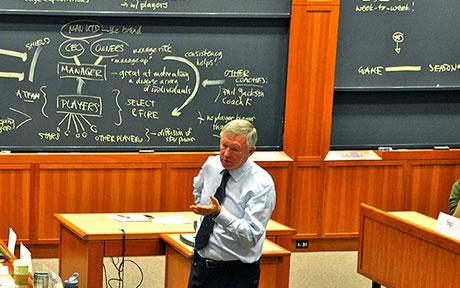
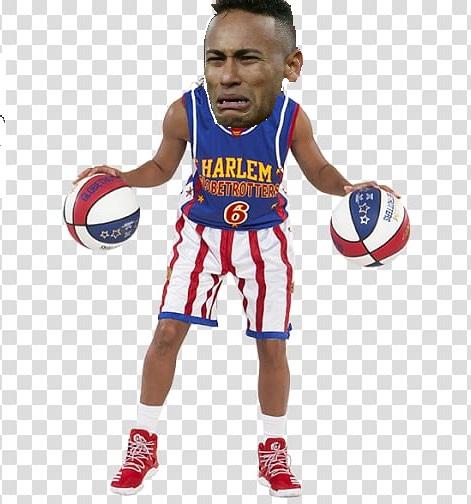
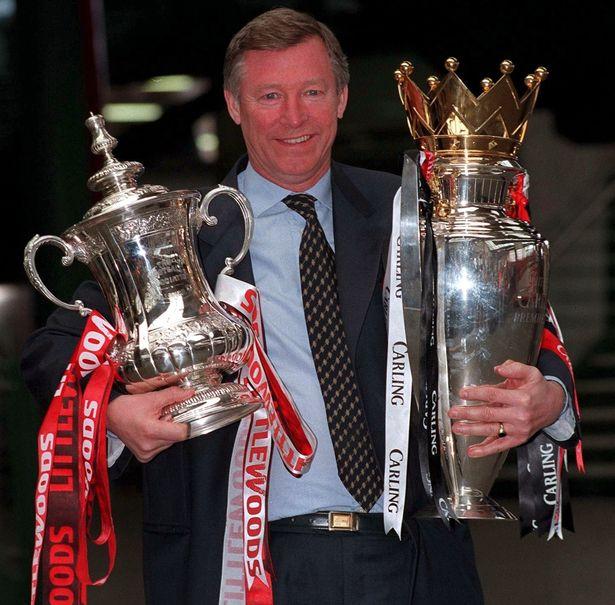


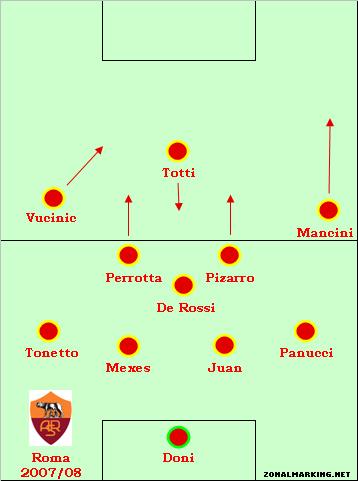




4 thoughts on “Total Football Journeyman: Sir Alex’s Strikerless Masterclass”
You write beautifully Ihor¡
Thank you!